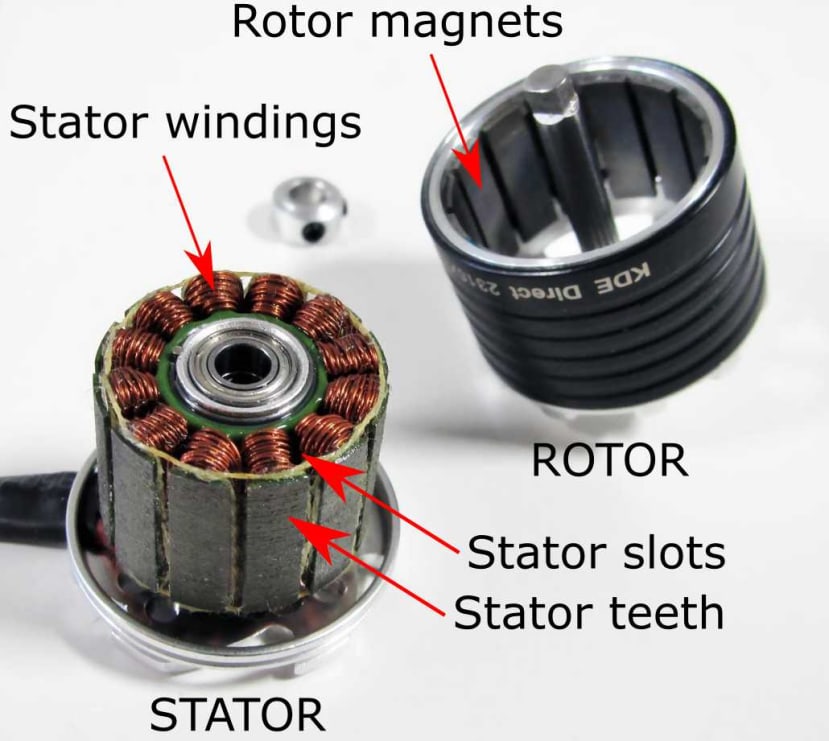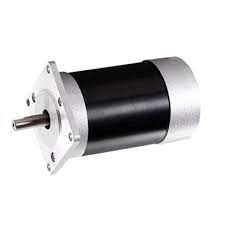Powerful Brushless DC Motors to Lift a Person
Follow articleHow do you feel about this article? Help us to provide better content for you.
Thank you! Your feedback has been received.
There was a problem submitting your feedback, please try again later.
What do you think of this article?
Have you ever imagined yourself soaring above the ground, free from the constraints of gravity? With the help of powerful brushless DC (BLDC) motors, that dream could become a reality. BLDC motors are revolutionizing personal lifting devices, from electric bikes to personal flying machines.
They outperform conventional brushed DC motors in terms of efficiency, longevity, and smoothness of operation. This article will discuss the uses of brushless DC motors (BLDCs), the factors to consider when selecting a motor, and some instances of BLDC motors strong enough to lift a person.
What Are Brushless DC Motors?
A brushless DC (BLDC) motor is an electric motor that utilizes a permanent magnet rotor and stator windings in generating a rotating magnetic field. Unlike traditional DC motors, BLDC motors do not use carbon brushes to commutate the current flow to the armature windings. Instead, the commutation is achieved electronically through the use of solid-state switches.
This design eliminates the need for brushes, resulting in higher efficiency, power density, and lower maintenance requirements. Additionally, BLDC motors offer precise control and quiet operation, making them suitable for applications in various industries, such as robotics, drones, electric vehicles, and medical equipment.
Advantages of Brushless DC Motors
Brushless DC (BLDC) motors have become increasingly popular in various applications, including lifting a person. The technology of BLDC motors is based on a permanent magnet rotor and a stator that contains the windings. Unlike brushed motors, BLDC motors do not require brushes and commutators for their operation. Instead, they utilize an electronic controller to manage the energy flow to the motor. This feature provides several advantages in lifting a person.
One of the main advantages of BLDC motors in lifting a person is their high efficiency. BLDC motors are up to 90% efficient, meaning that they convert most of the electrical energy into mechanical energy. This efficiency allows for more precise control of the motor's speed and torque, ensuring the smooth and stable movement of the lifting mechanism. Additionally, the high efficiency of BLDC motors reduces energy consumption, which can result in lower operating costs.
Another advantage of BLDC motors in lifting a person is their high power-to-weight ratio. Due to their compact size and high power output, BLDC motors can deliver a high lifting capacity while maintaining a relatively low weight. This feature is particularly useful in lifting equipment that requires mobility and flexibility, such as lifting chairs or hoists used in hospitals and rehabilitation centres.
BLDC motors also have a longer lifespan compared to traditional brushed motors. Since they do not have brushes that wear out over time, BLDC motors require minimal maintenance and have a longer operating life. This feature is particularly important in lifting equipment that is used frequently, as it reduces the need for downtime and repairs.
Another advantage of BLDC motors is their ability to operate silently. Unlike brushed motors, which produce a distinct buzzing sound, BLDC motors operate quietly due to their advanced electronic control system. This feature is particularly useful in lifting equipment used in quiet environments, such as hospitals or libraries, where noise can be disruptive.
Disadvantages of Brushless DC Motors to Lift a Person
While brushless DC (BLDC) motors offer several advantages in lifting a person, there are also some disadvantages to consider. One of the main drawbacks of BLDC motors is their higher cost than traditional brushed motors. In addition, BLDC motors require advanced electronic control systems, which can increase their manufacturing costs. As a result, the initial investment in BLDC motors may be higher, which may not be feasible for some lifting equipment applications.
Another disadvantage of BLDC motors is their sensitivity to environmental conditions. BLDC motors are vulnerable to temperature fluctuations and moisture, affecting their performance and lifespan. Exposure to extreme temperatures or humidity can cause the motor's electronic components to degrade, leading to decreased efficiency or even failure. This sensitivity to environmental conditions may require additional maintenance and protective measures, which can increase the overall operating costs of the lifting equipment.
Another limitation of BLDC motors is their compatibility with power sources. BLDC motors require specific voltage and current inputs to operate efficiently. If the voltage or current input is too low or too high, the motor's performance may suffer, leading to decreased efficiency or even failure. This limitation may require additional power conditioning equipment, such as inverters or converters, to ensure that the BLDC motor operates within its optimal range.
Additionally, BLDC motors may require specialized technical expertise for maintenance and repairs. The electronic control systems of BLDC motors are more complex than traditional brushed motors, which may require specialized training and knowledge to diagnose and repair any issues. This specialized expertise requirement may increase the lifting equipment's overall maintenance costs.
Lastly, BLDC motors may produce electromagnetic interference (EMI) that can interfere with other electronic devices. This EMI can cause electromagnetic interference in nearby electronic devices, such as medical equipment or communication systems. This limitation may require additional shielding or filtering equipment to reduce the EMI and ensure that the lifting equipment operates safely.
Applications of Brushless DC Motors in Personal Lifting Devices
Brushless DC (BLDC) motors have revolutionized the personal lifting devices industry, providing better performance, efficiency, and reliability than traditional brushed motors. As a result, BLDC motors are widely used in various personal lifting devices, including stairlifts, patient lifts, and wheelchair lifts, among others. In this article, we will discuss the applications of BLDC motors in personal lifting devices and their benefits.
One of the primary applications of BLDC motors in personal lifting devices is in stairlifts. Stairlifts lift people up and down the stairs in their homes, offices, or public places. BLDC motors provide smooth and reliable operation, reducing the risk of sudden stops or jerky movements. Additionally, BLDC motors offer high torque output, enabling stairlifts to lift people up and down the stairs effortlessly.
Wheelchair lifts also use this type of motor and are installed in vehicles or buildings to lift wheelchairs and their occupants to different levels. BLDC motors provide high torque output, enabling wheelchair lifts to lift heavier loads, including electric wheelchairs. Additionally, BLDC motors offer precise and smooth operation, reducing the risk of sudden stops or jerky movements.
Moreover, BLDC motors are used in hoists and cranes on construction sites. These lifting devices lift heavy loads, including materials, equipment, and workers. BLDC motors offer high power output and torque, enabling hoists and cranes to lift heavy loads easily.
Features to Consider When Choosing a Brushless DC Motor for Personal Lifting
When choosing a brushless DC (BLDC) motor for personal lifting devices, several key features should be considered to ensure optimal performance and safety. Here are some important factors to consider:
- Power Output: One of the most important features to consider is the power output. The motor's power output should be sufficient to lift the required load. The power output of BLDC motors is measured in watts (W) or kilowatts (kW).
- Torque: Another important feature to consider is torque. Torque is the twisting force that the motor generates to lift the load. The motor's torque output should be sufficient to lift the required load. The torque output of BLDC motors is measured in Newton meters (Nm).
- Speed: The speed of the motor should be sufficient to lift the load at the required speed. The speed of BLDC motors is measured in revolutions per minute (RPM).
- Efficiency: The motor's efficiency determines how much energy is wasted during operation. A motor with high efficiency will consume less power, reducing the operating costs of the lifting device. The efficiency of BLDC motors is typically higher than traditional brushed motors.
- Size: The motor's size should be compatible with the size of the lifting device. A too-large motor may not fit in the lifting device, while a too-small motor may not provide sufficient power output or torque.
- Environmental Conditions: The motor should be designed to operate in the environment's temperature range and humidity levels. Additionally, the motor should be resistant to dust, moisture, and other contaminants that may be present in the environment.
Conclusion
BLDC motors have improved efficiency, lifetime, low maintenance, and torque, making them ideal for personal lifting equipment. It's important to think about things like power output, size and weight, the control system, and battery life when choosing a motor for a personal lifting device. With technological improvements, BLDC motors are projected to get stronger and more effective, making personal lifting devices safer and more widely available.


